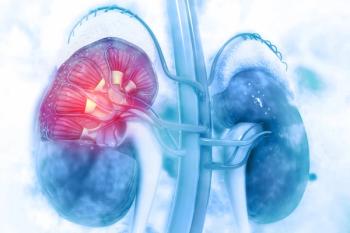
Radiofrequency Ablation Safe, Effective for Small Renal Tumors
Image-guided radiofrequency ablation may be an effective alternative treatment for small renal cell carcinoma tumors, according to the results of a recent study.
Image-guided radiofrequency ablation may be an effective alternative treatment for small renal cell carcinoma tumors, according to the results of a study
“Over the last 10 years, image guided ablation of renal cell carcinoma is increasingly being offered as an option for treating small renal tumors in institutions with the appropriate expertise following multidisciplinary discussion, especially in cases where nephron sparing is a desired intention,” said study author Tze M. Wah, MD, associate professor in the department of diagnostic and interventional radiology at St. James’s University Hospital, United Kingdom. “The main finding of the study shows that in our experience [radiofrequency ablation] is safe, offers nephron sparing and minimally invasive treatment for small renal tumors, with similar oncological outcome data as the surgical outcome data.”
Wah and colleagues conducted a study to determine the efficacy of radiofrequency ablation in treating renal tumors less than 4 cm. The study included 200 tumors in 165 patients treated at their institution between 2004 and 2012. The mean tumor size was 2.9 cm. The mean follow-up period was 46.1 months.
Radiofrequency ablation had a high technical success rate with 98.5% of tumors completely ablated. Looking at primary success, 191 patients had successful ablation after the initial session (95.5%). Three patients required a second session and three required a third. The researchers reported that this rate of success “is similar to other published series with reported rates that ranged from 90% to 100%.”
Wah and colleagues also identified two independent predictors of complete ablation: tumor size of less than 3 cm and exophytic location.
After the procedure, 98% of patients were able to maintain renal function. Four patients developed significant deterioration of renal function defined as a more than 25% decrease in glomerular filtration rate.
The researchers also looked at survival outcomes after radiofrequency ablation. The 5-year overall survival rate was 75.8%. Cancer-specific survival, local recurrence-free survival and metastasis-free survival were 97.9%, 93.5%, and 87.7%, respectively.
Finally, the study examined the side effects of radiofrequency ablation. Six patients who underwent the procedure experienced ureteric injury. The researchers found that central location and lower pole position both independently predicted ureteric injury. In addition, one patient had calyceal-cutaneous fistula, one had acute tubular necrosis, and two patients had abscess.
“The present study is one of the largest series by far and increases the total number of cases reported from about 400 to 600,” the researchers wrote. “This, together with our ability to analyze risk factors in the numbers available to us, means that it is now possible to begin to draw firm conclusions about the safety and efficacy of radiofrequency ablation and to reassure patients that, in the hands of experienced operators, they can be confident that the results are comparable to any alternative approach to nephron-sparing surgical or non-surgical treatment for renal cancer.”
Newsletter
Stay up to date on recent advances in the multidisciplinary approach to cancer.





















































































